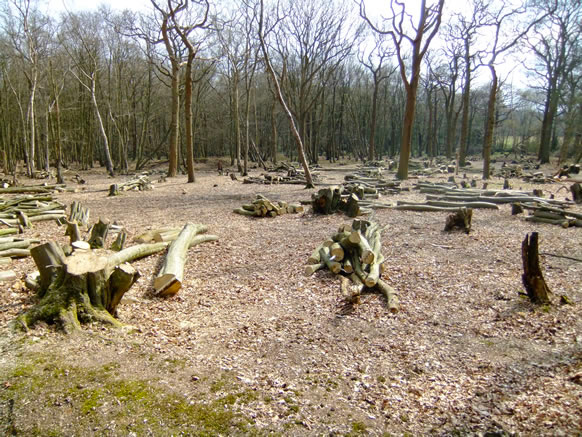Ruislip Woods Management
Managing Ruislip Woods
The management of Ruislip Woods is based on the Long Term Management Plan (LTMP), which is long term vision for the woods and forms the backbone of all the decisions made about the management of the woods. The LTMP is a 100 year plan that was prepared by the Ruislip-Northwood Woods Advisory Working Party following a famous public meeting in 1979. It was adopted in 1982 and every 5 years a more detailed plan is written to cover the following 5 years.
The process of developing each 5 year plan is based on analysing the results of the previous plan and reporting these to see how the management strategies worked and what can be learnt for future planning. The resulting document is also an integral part of the Green Flag and Green Heritage Application which is an annual award. For the purposes of writing the report a sub committee has been set up of the acknowledged experts in woodland management and the natural history of the site.
This management plan work is undertaken with involvement from the local community through Ruislip Woods Management Advisory Group (RWMAG).
Community Involvement in the Management of Ruislip Woods
The management of Ruislip Woods is an interesting example of community involvement. Residents (through local Residents Associations) are involved in decision making in partnership with the London Borough of Hillingdon (Hillingdon Council) who are responsible for managing the woodland. In this way, the local community has a say in the future direction of the Woods.
The body that oversees the management of Ruislip Woods is called the Ruislip Woods Management Advisory Group (RWMAG).

Ruislip Woods Management Advisory Group (RWMAG)
RWMAG was set up by Hillingdon Council in 1982 to oversee the implementation of the Long Term Management Plan (LTMP) that had just been adopted by Hillingdon Council. RWMAG measures the progress of the management plans and reports back to Hillingdon Council periodically.
There must be a balance between the use of the Woods by the public and its protection as a National Nature Reserve (NNR) and Site of Special Scientific Interest (SSSI). RWMAG also advises Hillingdon Council on the management of Ruislip Woods and the preservation of their ecology. It has become a forum for new ideas and proposed developments.
RWMAG consists of representatives from the Residents Associations that adjoin the woods, the Council Green Spaces Team, The Ruislip & District Natural History Society, plus representatives from any of the user groups that use the woods such as the Hillingdon Equestrian Advisory Group, Hillingdon Athletics Club. National user groups such as the Ramblers Association are also invited to take part.
RWMAG meets four times per year and is chaired by Graeme Shaw, a member of the Ruislip Residents Association. It has a technical committee who inspect the Woods four times a year to look at specific problems and issues, such as the sites that are due to be coppiced. Contact details: RWMAGinfo@gmail.com
If you want to become a volunteer in Ruislip Woods then please see the latest information on Hillingdon Council’s Website or contact secretary@ruislipwoodstrust.org.uk for more information.
Coppicing in Ruislip Woods
Oak and hornbeam are the most numerous native trees in the Woods. Each year some areas of hornbeam are coppiced. This involves cutting down all the branches and main trunk and leaving a protruding stump (called the stool). After coppicing, new shoots grow from the stool and the tree effectively regenerates itself. Whereas uncoppiced hornbeams may live for seventy years or so, coppiced hornbeams have been known to live for five hundred years. About 2.5% of the Woods are coppiced each year in accordance with a plan which maps out the Woods. The coppicing is then carried out over a twenty year cycle and then re-started. This ensures that only about one half of the Woods will be coppiced, leaving many other interesting forms of woodland intact.

Page last updated: 18/06/2023
By Anand Punja
